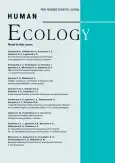ESTIMATION METHOD OF CONTRIBUTION OF CAUSE-SPECIFIC MORTALITY TO LIFE EXPECTANCY
- Authors: Mironova A.A.1, Narkevich A.N.1, Vinogradov K.A.1, Kurbanismayilov R.B.1, Grjibovski A.M.2,3,4,5
-
Affiliations:
- Krasnoyarsk V. F. Voyno-YasenetskyState Medical University
- Northern State Medical University
- West Kazakhstan Marat Ospanov Medical University
- AL-Farabi Kazakh National University
- North-Eastern Federal University
- Issue: Vol 27, No 5 (2020)
- Pages: 57-64
- Section: Articles
- URL: https://journals.rcsi.science/1728-0869/article/view/35110
- DOI: https://doi.org/10.33396/1728-0869-2020-5-57-64
- ID: 35110
Cite item
Full Text
Abstract
Keywords
Full Text
##article.viewOnOriginalSite##About the authors
A. A. Mironova
Krasnoyarsk V. F. Voyno-YasenetskyState Medical University
A. N. Narkevich
Krasnoyarsk V. F. Voyno-YasenetskyState Medical University
Email: narkevichart@gmail.com
кандидат медицинских наук, доцент, заведующий научно-исследовательской лабораторией медицинской кибернетики и управления в здравоохранении, доцент кафедры медицинской кибернетики и информатики
K. A. Vinogradov
Krasnoyarsk V. F. Voyno-YasenetskyState Medical University
R. B. Kurbanismayilov
Krasnoyarsk V. F. Voyno-YasenetskyState Medical University
A. M. Grjibovski
Northern State Medical University; West Kazakhstan Marat Ospanov Medical University; AL-Farabi Kazakh National University; North-Eastern Federal University
References
- Андреев Е. М. Метод компонент в анализе продолжительности жизни // Вестник статистики. 1982. № 9. С. 42-47.
- Антипов В. В., Антипова С. И. Медико-демографические характеристики эпидемиологического перехода в Беларуси // Медицинские новости. 2014. № 3. С. 26-31.
- Будаев Б. С., Зарбуев А. Н., Данзанова Д. Г., Наркевич А. Н., Виноградов К. А. Динамика показателя смертности от туберкулеза населения Республики Бурятия в 2013-2017 годах // Сибирское медицинское обозрение. 2019. № 1. С.80-84.
- Глушаков А. И. Показатель «Ожидаемая продолжительность жизни»: определение, методы расчета и анализа // Общественное здоровье и здравоохранение. 2004. № 1. С. 12-16.
- Григорьев Ю. А. Метод компонент в анализе элиминационного резерва средней продолжительности жизни населения // Медицина и демография. Новокузнецк, 1984. С. 49-51.
- Григорьев Ю. А., Баран О. И. Опыт многомерного статистического анализа в медико-демографических исследованиях // Вестник Российской академии естественных наук. Западно-Сибирское отделение. 2017. № 20. С. 169-175.
- Короленко А. В., Морев М. В. О демографических последствиях суицидальной смертности // Суицидология. 2015. № 4. С. 48-60.
- Морев М. В., Короленко А. В. Оценка демографических и социально-экономических потерь вследствие преждевременной смертности населения России и Вологодской области // Проблемы прогнозирования. 2018. № 2. С. 110-123.
- Наркевич А. Н., Миронова А. А. Вклад случаев смерти от различных причин в ожидаемую продолжительность жизни населения Красноярского края и его динамика // Медицинский альянс. 2019. № 1. С. 71-81.
- Стефановський А. Компонентний аналiз середньо! тривалосп життя населення. Киев: 1нститут економжи НАН Украши, 2001. 128 с.
- Arias E., Heron M., Xu J. United States Life Tables, 2014 // National Vital Statistics Reports. 2017. N 4. P. 1-64.
- Arriaga E. E. Measuring and Explaining the Change in Life Expectancies // Demography. 1984. N 21. P. 83-96.
- Chandra Sekar C. The effect of the change in mortality conditions in an age group on the expectation of life at birth // Human Biology. 1949. N 1. P. 35-46.
- Dicker D., Nguyen G., Abate D. Global, regionnal, and national age-sex-specific mortality and life expectancy, 1950-2017: a systematic analysis for the Global Burden of Disease Study 2017 // Lancet. 2018. N 10159. P. 1684-1735.
- Murray C. J. L., Ferguson B. D., Lopez A. D., Guillot M., Salomon J. A., Ahmad O. Modified logit life table system: principles, empirical validation, and application // Population studies. 2003. N 57. P. 165-182.
- Pollard J. H. Methodological issues in the measurement of inequality of death // WHO/ESCAP «Mortality in South and East Asia: A Review of Changing Trends and Patterns», Manila, 1980. Geneva: World Health Organization, 1982. P. 531-558.
- Pollard J. H. On the decomposition of changes in expectation of life and differentials in life expectancy // Demography. 1988. N 2. P. 265-276.
- Pollard J. H. The expectation of life and its relationship to mortality // Journal of the Institute of Actuaries. 1982. N 109. P. 225-240.
- Preston S. H., Heuveline P., Guillot M. Demography: measuring and modeling population processes. Oxford: Blackwell Publishers Inc., 2001. 291 p.
- Wang H., Abajobir A. A., Abate K. H. Global, regional, and national under-5 mortality, adult mortality, age-specific mortality, and life expectancy, 1970-2016: a systematic analysis for the Global Burden of Disease Study 2016 // Lancet. 2017. 390 (10100). P. 1084-1 150.
- Wang H., Dwyer-Lindgren L., Lofgren K. T., Rajaratnam J. K., Marcus J. R., Levin-Rector A., Levitz C. E., Lopez A. D., Murray C. J. L. Age-specific and sex-specific mortality in 187 countries, 1970-2010: a systematic analysis for the Global Burden of Disease Study 20l0 // Lancet. 2012. N 380. P. 2071-2094.
Supplementary files







